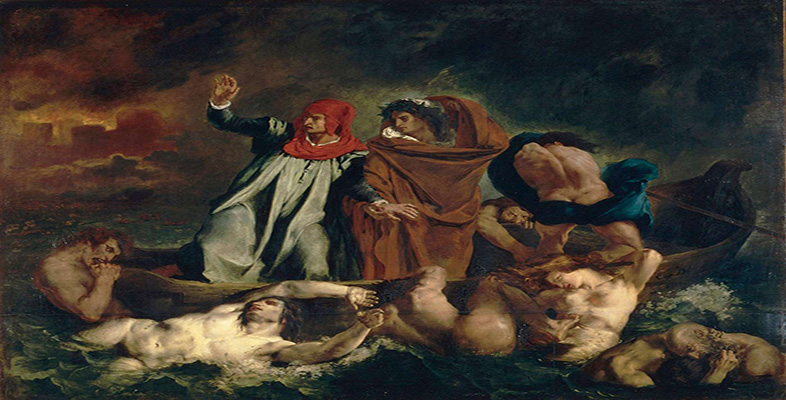5.6 Modernity – challenging tradition
Delacroix also challenged tradition in paintings like Greece on the Ruins of Missolonghi (1826) and Liberty Leading the People (1830) (Plates 29 and 30), in which he mixes conventional, classical allegory with realism: the leading women in these paintings are both antique ideal and fleshy reality. (This rejection of traditional boundaries and categories was a hallmark of the Romantic mindset.) Greece on the Ruins of Missolonghi commemorates the death in 1824 of Byron at Missolonghi. Byron had travelled there in order to assist and finance Greek insurgents against Turkish rule, but died after contracting a fever. In 1825 the Turks defeated the Greeks and recaptured Missolonghi; the Greeks blew themselves up rather than surrender. (The independence of Greece was finally recognised in 1829.) In the painting, the woman personifying Greece, standing in front of a triumphant Turk, is at once classical allegory and real woman dressed in national costume. Delacroix has adapted classical conventions to his own requirements. The same adaptation occurs in Liberty Leading the People, in which the allegorical heroine leads the masses in the 1830 revolution discussed later.
Click to see Plate 29: Eugène Delacroix, Greece on the Ruins of Missolonghi [Tip: hold Ctrl and click a link to open it in a new tab. (Hide tip)]
Click to see Plate 30: Eugène Delacroix, Liberty Leading the People
The spirit of rebelliousness was expressed in the name of modernity, the thirst for which had originated in the Enlightenment but gathered in intensity during the Romantic era. Stendhal's admiration for Napoleon was based on his status as a modern hero and genius. At this time, the notion of modernity carried with it a complex set of associations. To Stendhal and others, part of Napoleon’s modernity derived from his allegiance to enlightened ideals: the Enlightenment had swept away the superstitions of the old order and there was something quite obviously heroic and reformist about the emperor’s supposed allegiance to it. On the other hand, in literary and artistic matters the traditions of the Enlightenment were deemed to be too restrictive. In his 1823 pamphlet, Racine and Shakespeare, Stendhal prefers Shakespeare to Racine because he adopted a freer attitude towards subject matter and composition. He wants ‘a language to suit the children of the Revolution’: art accessible and relevant to his own time. This might be an uncomfortable process: ‘It takes courage to be romantic, because you must take risks’ (quoted in Brookner, 1971, p.48). To artists like Delacroix, modernity was associated, as in Stendhal's writings, with a rejection of servile imitation of a restricted classicism and with a search for art of contemporary relevance. It was important to Romantic artists to respond authentically to their own time. For example, Delacroix greatly admired the composer Rossini, who seemed to speak to his contemporaries’ sensibility. But there was less positive, cheerful energy and heroism in Delacroix’s Chios and Sardanapalus than Stendhal would have liked and than he expressed in his own novels. The two men remained firm friends, but on the basis that their modernising spirit pulled them in slightly different directions. For Delacroix was not an uncompromising moderniser. He was suspicious of scientists and, like Wordsworth, regretted the impact on modern life of the railways. His modernity lay in the dark abysses of the Gothic.
